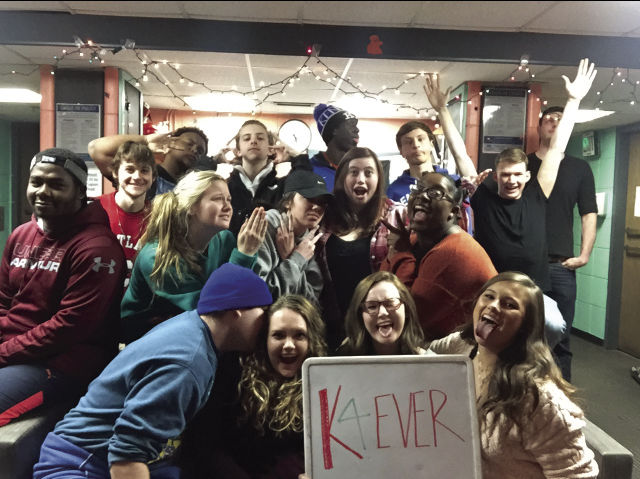UK dorms have changed radically, but not all students welcome the change
August 21, 2018
UK’s multi-year, multimillion-dollar campus housing overhaul is complete, and one thing is abundantly clear— the dorms ain’t what they used to be.
Over the past six years, UK has constructed nearly 7,000 new modern dorm units in 14 new dorm buildings, and UK has closed and condemned buildings which held just over 4,400 traditional beds, data provided by UK Housing shows.
In 2012, more than 85 percent of UK’s on-campus beds were in small, two-to-a-unit, traditional dorm rooms that were often down the hall from a bathroom shared by much of the floor. This year, about 79 percent of on-campus students will lay down in their own bedrooms on Tempur-Sealy mattresses just a few steps from their kitchenette and bathroom.
Sighting GPA increases and higher retention rates, UK Housing calls the new dorms a success for the student, but some students said the new dorms have their faults— especially socially.
The architectural changes became lifestyle changes for the few students who have firsthand experience of the switch from traditional dorm to modern dorm.
Kevin Moran, a junior, was among the last residents of the now-closed Kirwan Blanding complex when it completely closed in 2017. He was moved from his close to 50-year-old traditional dorm to a dorm that was opened less than three years prior. He had a few complaints.
“There’s no community aspect,” Moran said of the Woodland Glen I dorm that he moved to mid-year. Moran, who is from New York, said he met a lot of his original college friends in the traditional dorms.
In Kirwan, dorm room doors were often left open, and neighbors visited liberally, said Clark Demaree, a recent electrical engineering graduate. He said he knew half of his floor within a semester.
“It was a social thing,” he said.
In the Johnson Hall he was moved to, Demaree said most doors were closed and he knew some of his neighbors, “but not many.”
UK Housing says the opposite. The new dorms are not just “heads on beds,” said Penny Cox, the Associate Vice President of Administration. A third of the space in each of the dorms is devoted to space meant to foster community and belonging.
With Living Learning Programs that house students of similar majors in close proximity, and a bevy of study rooms, specialized classrooms and meeting rooms, Cox said the new dorms were designed for community building and academic success.
But according to Demaree, the architecture of the newer dorms didn’t encourage the communities that sprung out of the tight spaces and shared bathrooms of the older, traditional style.
“I think the space we were in had a very big impact on how we were socializing,” Demaree said. Kirwan Blanding encouraged branching out socially, “while the architecture of Johnson didn’t do that.”
Moran and Demaree both thought the problem was an issue of scale.
“If everyone has their own bathroom, nobody has to leave their room,” Moran said. “But if everyone shares a bathroom they’re forced to see everyone else.”
In Kirwan, Demaree said everyone hung out in the lobby. In Johnson, the dorm’s multiple social spaces “spread everyone out.”
But it may be that there is no longer a market demand for the close-knit quarters of a traditional dorm, and housing data shows that enough people are happy to live in a modern dorm room.
“Ninety-three percent of our freshman have never shared a room, so the demand just isn’t there,” Cox told the Lexington Herald-Leader in December when the plans for demolishing Kirwan Blanding were announced. “There are very few students who want to live in those kinds of buildings (at Kirwan Blanding).”
This year, Cox said UK will start the school year with 97 percent of the undergraduate dorms filled— equaling about 7,200 students. Last year, the dorms hovered around 92 percent full, Cox said, who added that those numbers are typical.
Minimum rooming prices have also gone up to match the value of the dorms.
In 2015, a traditional room at Kirwan Blanding cost about $4,800 for a whole year, previous Kernel reports show. This year, living in UK’s cheapest dorm option— the 4-person suite— will cost about $7,400 for the whole year.
The Kirwan Blanding complex, which is composed of the two south-campus towers and eight surrounding buildings, should be demolished in the next couple years if the current plans hold, Cox said. The complex held most of UK’s old traditional dorm rooms.
Demolition, which should cost about $15 million, will begin once all of the “water, electric, gas, all the IT stuff” that runs in tunnels beneath the complex are rerouted and asbestos abatement is completed. Cox said the university has yet to get all of the funds necessary to complete the demolition.
“It’s not a great thing for people to want to contribute to, right?” Cox said. “If you’re looking for a timeline, I’d say two years.”
After demolition, Cox said the space will be made into a grassy, tree-lined walking path.
When the final residents of Kirwan were told that the old dorm would be their home no longer, things got emotional. Moran said he yelled and argued with the UK officials who offered spaces in the newer dorms for the same price of the older ones.
Demaree said a lot of good friends simply realized they wouldn’t be living together anymore.
“There was crying,” he said.
































































































































































